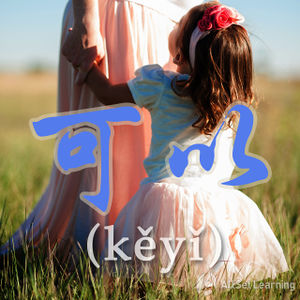Difference between revisions of "Expressing permission with "keyi""
| Line 22: | Line 22: | ||
* 我 <em>可以</em> 进来 吗?<span class="pinyin">Wǒ <em>kěyǐ</em> jìnlái ma?</span><span class="trans">May I come in?</span> | * 我 <em>可以</em> 进来 吗?<span class="pinyin">Wǒ <em>kěyǐ</em> jìnlái ma?</span><span class="trans">May I come in?</span> | ||
| − | * 二十 一 岁 以后 <em>可以</em> 喝 酒。<span class="pinyin">Èrshí yī suì yǐhòu <em>kěyǐ</em> | + | * 二十 一 岁 以后 <em>可以</em> 喝 酒。<span class="pinyin">Èrshí-yī suì yǐhòu <em>kěyǐ</em> hē jiǔ.</span><span class="trans">After you are 21 years old, you may drink alcohol.</span> |
* 妈妈,我 <em>可以</em> 出去 玩 吗?<span class="pinyin">Māma, wǒ <em>kěyǐ</em> chūqù wán ma?</span><span class="trans">Mom, may I go out and play?</span> | * 妈妈,我 <em>可以</em> 出去 玩 吗?<span class="pinyin">Māma, wǒ <em>kěyǐ</em> chūqù wán ma?</span><span class="trans">Mom, may I go out and play?</span> | ||
* 我们 <em>可以</em> 在 办公室 吃饭 吗?<span class="pinyin">Wǒmen <em>kěyǐ</em> zài bàngōngshì chīfàn ma?</span><span class="trans">Can we eat in the office?</span> | * 我们 <em>可以</em> 在 办公室 吃饭 吗?<span class="pinyin">Wǒmen <em>kěyǐ</em> zài bàngōngshì chīfàn ma?</span><span class="trans">Can we eat in the office?</span> | ||
Revision as of 08:06, 5 January 2017
-
Level
-
Similar to
-
Used for
-
Keywords
可以 (kěyǐ) is an auxiliary verb primarily used for expressing permission. It's often translated as "can," but in order to not get it confused with other words, it's best to think of it as "may" to emphasize the permission aspect.
Contents
Basic Usage
Just put 可以 (kěyǐ) in directly before a verb to create a meaning of "may" (plus the verb). It's the same structure whether it's a statement or a question.
Structure
Subj. + 可以 + Verb + Obj.
Use this structure to express permission to do things.
Examples
- 我 可以 进来 吗?May I come in?
- 二十 一 岁 以后 可以 喝 酒。After you are 21 years old, you may drink alcohol.
- 妈妈,我 可以 出去 玩 吗?Mom, may I go out and play?
- 我们 可以 在 办公室 吃饭 吗?Can we eat in the office?
- 我 可以 在 这里 停车 吗?Can I park here?
Negating 可以 (kěyǐ) sentences
可以 (kěyǐ) sentences are negated with 不 (bù), which is inserted before 可以 (kěyǐ).
Structure
Subj. + 不 + 可以 + Verb + Obj.
Examples
- 小 孩子 不 可以 看 这 个。Young children can't watch this.
- 你 现在 不 可以 进去。You can't go in right now.
- 这里 不 可以抽烟。You can't smoke here.
- 我们 都 不 可以 去 。None of us may go.
- 你 不 可以 说 脏话。You can't say swear words.
See also
- Expressing ability or possibility with "neng"
- Comparing "hui" "neng" "keyi"
- Expressing a learned skill with "hui"



